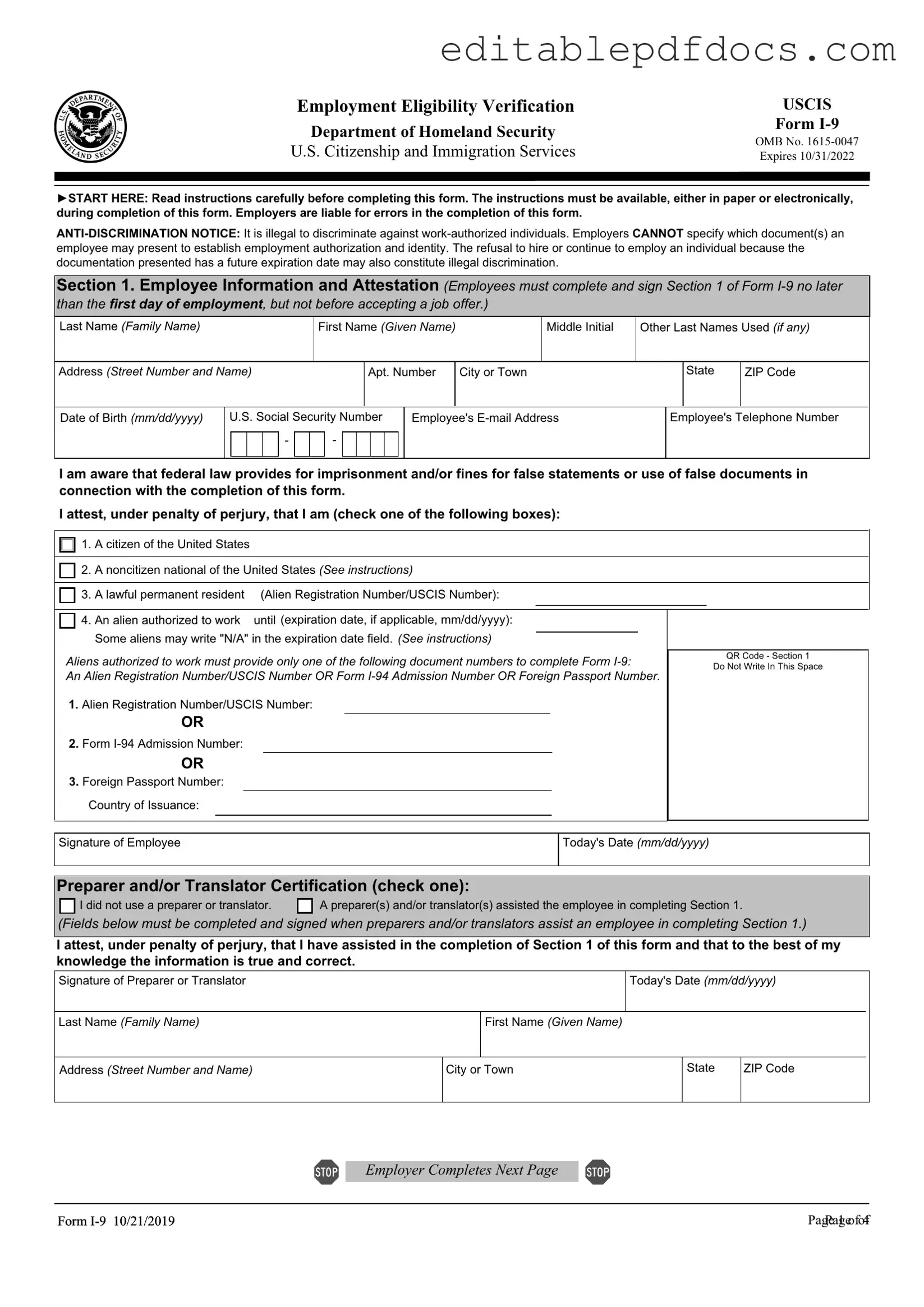Completing the USCIS I-9 form accurately is crucial for both employers and employees. Mistakes can lead to delays, penalties, and complications in the employment verification process. Here are nine common mistakes individuals make when filling out this important document.
One frequent error is not providing a signature. The I-9 form requires the employee's signature to certify that the information provided is true and complete. Omitting this signature can render the form invalid, leading to compliance issues for the employer.
Another common mistake is failing to complete the form within the designated time frame. Employees must fill out Section 1 of the I-9 form no later than their first day of work. Employers, on the other hand, must complete Section 2 within three business days of the employee's start date. Missing these deadlines can result in penalties.
People often overlook the requirement to use the full legal name. The I-9 form requires the employee's name to match the documentation provided. Any discrepancies between the name on the I-9 and the identification documents can create confusion and potential issues with employment eligibility.
Providing incorrect or incomplete information is another mistake that can occur. Employees should ensure that all fields are filled out accurately, including the date of birth and social security number. Incomplete sections may lead to unnecessary follow-up and verification delays.
Some individuals neglect to check the box indicating their citizenship or immigration status. This step is essential as it helps the employer determine the appropriate documentation needed to verify employment eligibility. Failing to make this selection can complicate the verification process.
Using outdated versions of the I-9 form is also a common error. The USCIS periodically updates the form, and using an old version can lead to compliance issues. It is vital to ensure that the most current version is being utilized to avoid penalties.
Another mistake involves not providing acceptable documentation. Employees must present original documents that establish their identity and employment authorization. Submitting copies or documents that do not meet the USCIS requirements can lead to disqualification from employment.
Some individuals may forget to review the form before submission. A final review can help catch any errors or omissions that could cause problems later. Taking the time to double-check the information can save time and effort in the long run.
Lastly, failing to retain the completed I-9 form for the required period is a significant oversight. Employers must keep the form for three years after the date of hire or one year after the employee's termination, whichever is longer. Not adhering to this retention policy can result in legal complications.
